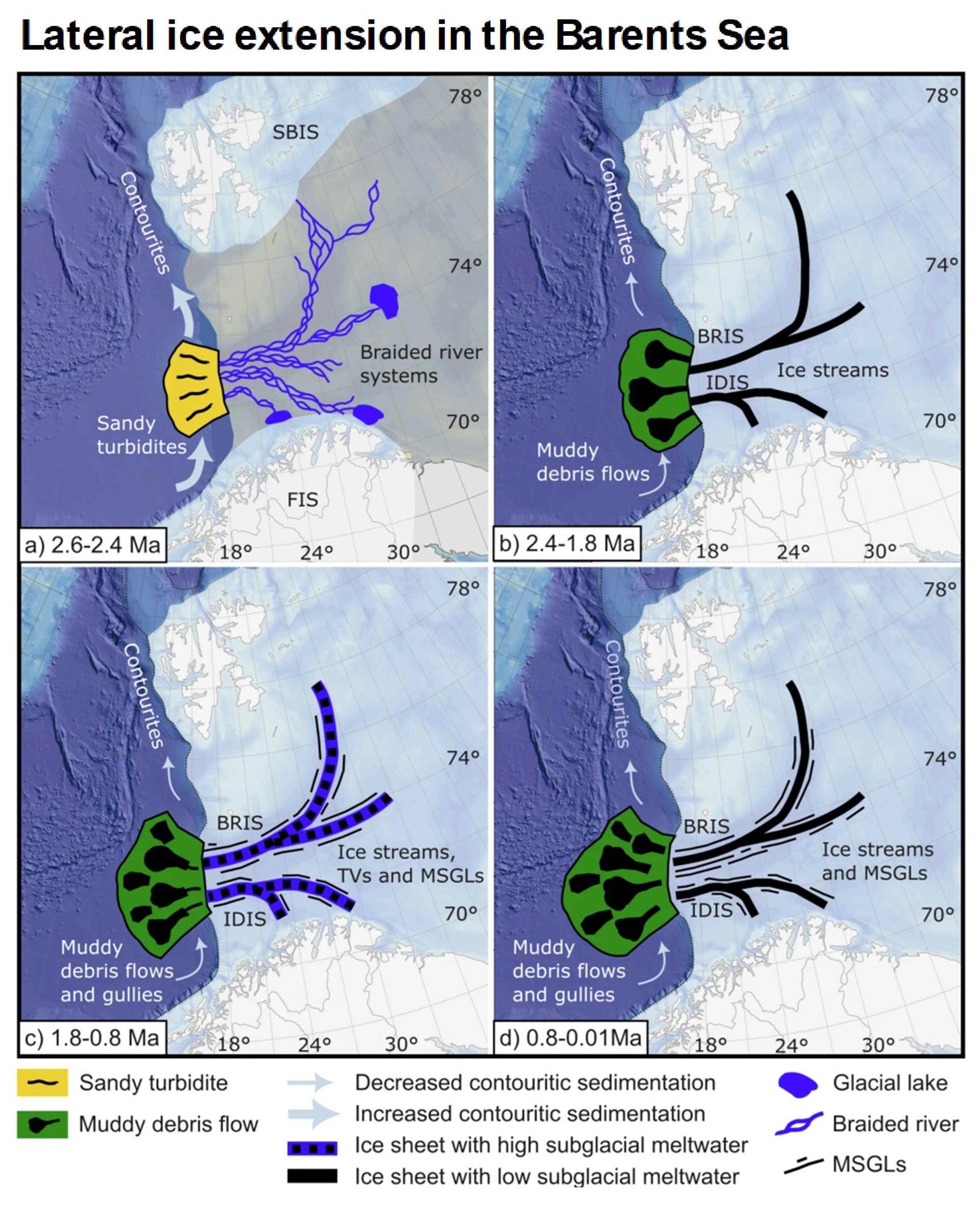Unveiling ancient Arctic ice sheets: A look into the early Pleistocene
November 14th, 2024
Imagine a time when the Arctic was even colder and icier than it is today. A time when vast ice sheets, much larger than anything we see today, covered vast swathes of land. This was the Early Pleistocene, a period between 2.6 million and 800,000 years ago.
While scientists have long studied the more recent Ice Ages, understanding the earlier glacial periods has been challenging due to the scarcity of well-preserved geological records.
A new study co-authored by an iC3 researcher sheds fresh light on this ancient, icy past.
A Window into the Past: The Barents Sea
The focus of this study is the Barents Sea, a vast body of water north of Norway and Russia. By analyzing high-resolution seismic data and drilling core samples, researchers have been able to piece together a detailed history of the region's glacial cycles.
They discovered extensive tunnel valleys, some reaching 12 kilometers wide and 200 meters deep, carved by powerful glacial meltwater streams. These are a testament to the immense force of the ancient ice sheets. Their presence indicates that the ice sheets were not only massive but also highly dynamic, with periods of rapid melting and flooding.

A Changing Climate, A Changing Landscape
The study also reveals a significant shift in the Earth's climate system around 1.2 million years ago, known as the Mid-Pleistocene Transition. This period marked a change in the dominant glacial cycle, from a 41,000-year cycle to a 100,000-year cycle. This shift is believed to be linked to changes in Earth's orbit and the resulting changes in solar radiation.
As the climate changed, so too did the behavior of the ice sheets. After the Mid-Pleistocene Transition, the ice sheets became more stable, with less frequent and less intense melting events. This led to a decrease in the formation of tunnel valleys and a shift towards the deposition of glacial sediments directly onto the seafloor.
Implications for the Future
“Understanding the past climate and the behavior of ice sheets is crucial for predicting future climate change,” said Monica Winsborrow of the iC3 Polar Research Hub, who co-authored the study.
“Studying the Early Pleistocene gives us valuable insights into the sensitivity of the Earth's climate system to changes in greenhouse gas concentrations and orbital forcing, and enables us to better assess the risks of future sea-level rise.”
Monica Winsborrow welcomes enquiries from fellow geophysicists and paleoclimatologists who are interested in joining her team by participating in iC3’s postdoctoral funding support programme.
The study “Major tunnel valleys and sedimentation changes document extensive Early Pleistocene glaciations of the Barents Sea” was published in Nature Communications Earth & Environment and is available open access.